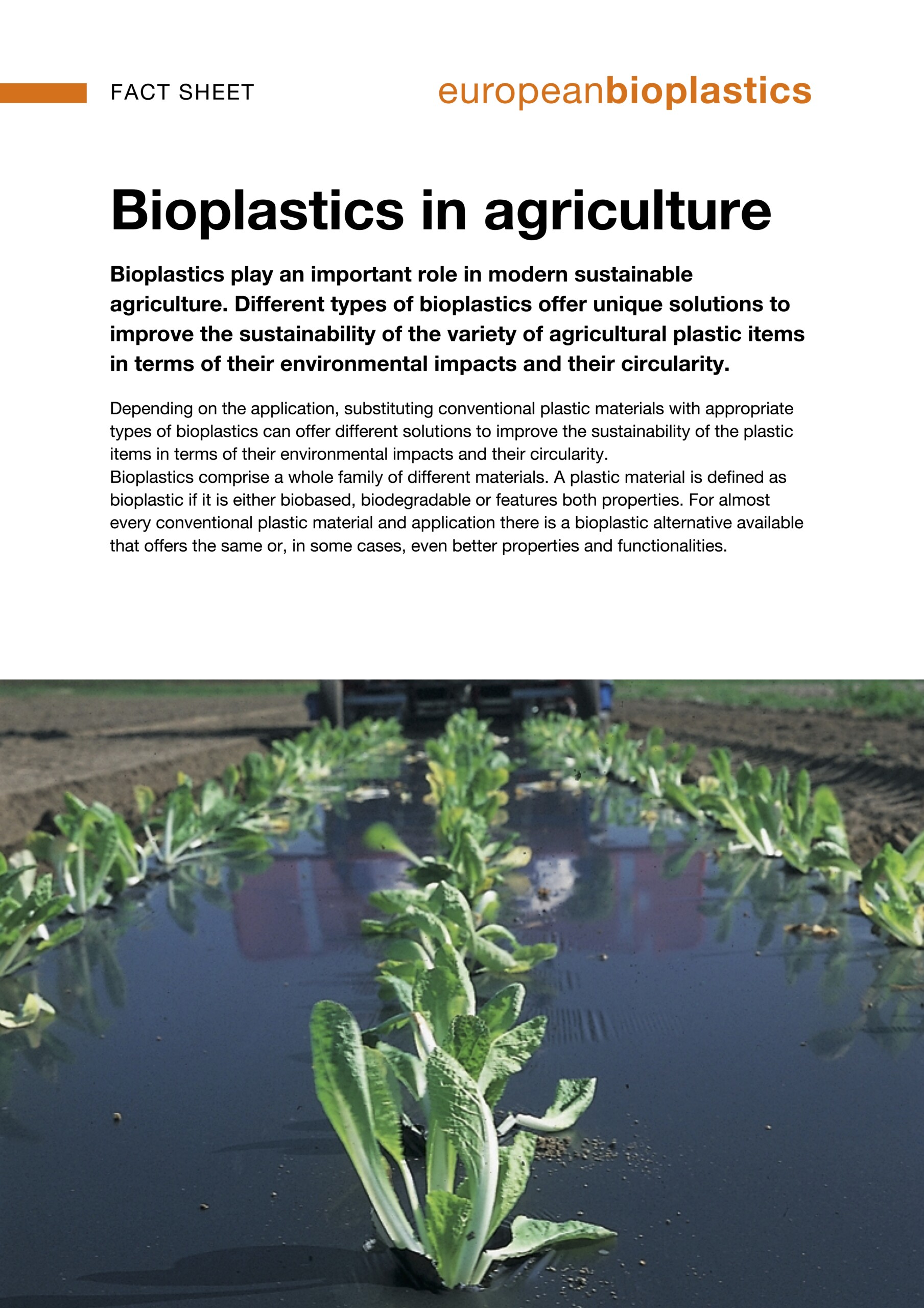Different types of bioplastics offer unique solutions to improve the sustainability of the variety of agricultural plastic items in terms of their environmental impacts and their circularity.
- All agricultural plastic applications that can be easily collected and recycled can be substituted with biobased, non-degradable materials. They have the environmental advantage of reducing the dependency on fossil resources and reducing greenhouse gas (GHG) emissions or even be carbon neutral.
- For agricultural plastics items that are likely to end up in green waste streams (such as threads, clips, nets, shelters…), the substitution with certified compostable plastics alternatives makes sense. They can help to reduce persistent microplastics in compost and contribute to soil health.
- For other conventional plastic applications known to be at high risk of releasing persistent microplastics in the soil (such as conventional non-biodegradable polymers for slow-release fertilisers, seed coating, tree guards, and mulch films), certified soil-biodegradable alternatives should be implemented. They help to reduce the accumulation of such microplastics in soil and eliminate the need for retrieval and recycling or disposal infrastructures.
- Certain certified soil-biodegradable applications may be traded as fertilisers if they carry the CE mark. This includes soil-biodegradable mulch films (from 20 November 2024), coating agents and water retention polymers (from 17 October 2028). They have been assessed to meet the high safety, health, and environmental protection requirements of the European Union and may be traded on the extended Single Market in the European Economic Area (EEA) without restrictions.
